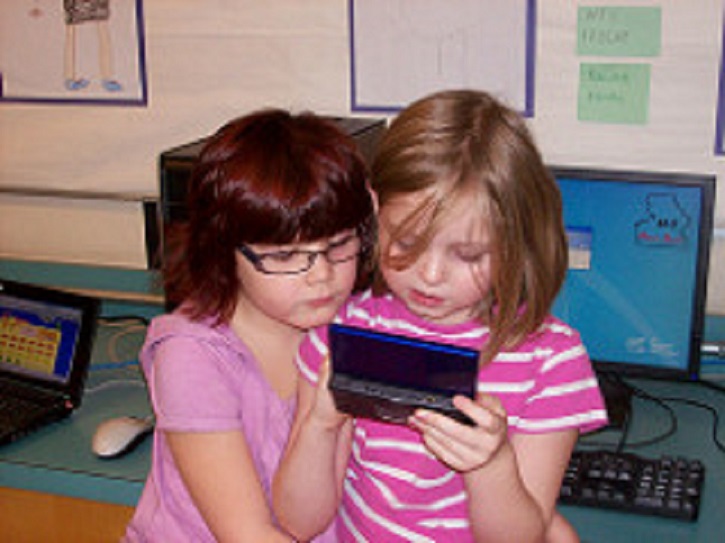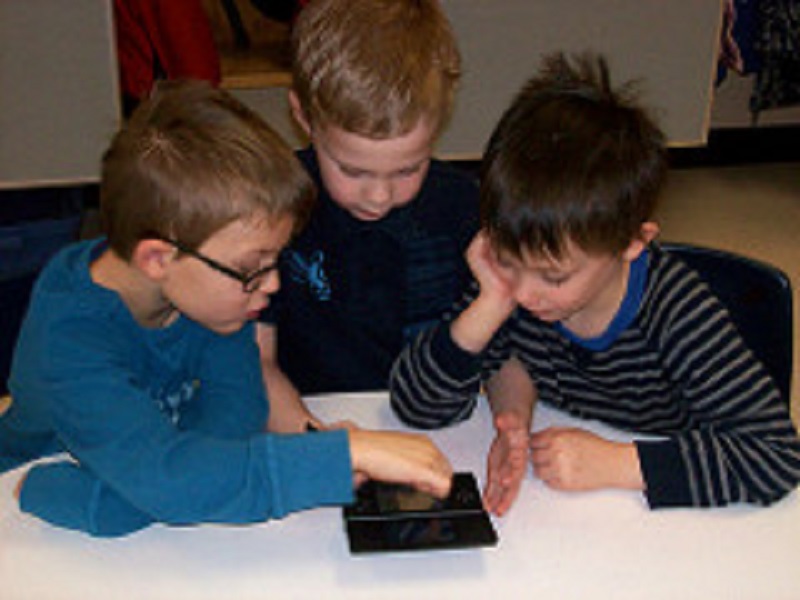Playing Nintendogs
This year, I have been using PBL (passion or project-based learning) in my classroom. Although language arts and math have certainly been involved, I have mainly been using the outcomes of my science, social studies and health curriculum as the focal point of my backwards-by-design planning.
Instead of focusing on outcomes one at a time, I have
grouped them into areas roughly approximating themes. Some of these themes have outcomes from only one curriculum and some have outcomes from two or even three subject areas. The overall themes we have completed so far this year have only involved science and health. This means that we have not yet learned any of the social studies outcomes.
Can It Work?
To be honest, I have dreaded the social studies outcomes. Science and health lend themselves easily to passion based learning in my mind. But I wasn’t sure how I was going to make it all work in social studies.
Our next unit or theme is based around relationships, rules and responsibilities. (I didn’t come up with that title myself.) It covers some social studies and some health outcomes. As with all good PBL, I want this to be based on what the students are interested in. Yet there really is nothing about the words “relationships,” “rules” and “responsibilities” that has the ability to inspire passion in most six-year olds.
Playing Nintendogs
One thing my students ARE passionate about is gaming. They love to play games on the computers in our classroom and an incredible number of them have a Nintendo DS of their own. I have been looking for more ways to integrate gaming into our day and “could this be the time? Gaming certainly involves rules, and effective relationships will be vital to make the six DS machines we have in our room work in a class of eighteen children.
I have used the DS in my classroom a variety of ways for several years. I know how to set things up so that our day flows smoothly and successfully with them. Using what I had learned to help the flow was not my purpose this time, though.
Let’s Try It
Without any preamble, I brought out the six handheld DS devices and said that we would spend the next period using them to play the game Nintendogs. They all cheered. “Go for it,” I said, and moved aside. They eagerly reached for the games.
What happened next was a study in human nature.
The children who got a DS in their hands eagerly moved to a table and began to use it. A couple of children sat down beside them to watch. Five children all hovered over the shoulder of one child. Unbeknownst to me, one child had one in his backpack, which he promptly took out and began to use. Several children all clustered around me expectantly. Clearly, I was supposed to solve their problem — they didn’t have one to use.
Their eyes kept darting to the counter where the DS devices had been, expecting more would appear. Despite the fact that we have used these machines many times this year, and they all know exactly how many there are, one child even moved some of the items on the counter to see if more might be hiding behind something. One student asked if they could use something else — an iPad or a computer. (This is often a shortage solution in our classroom.) I cheerfully told the children that we were using only the DS for this, and moved to another part of the room. I could hear a lot of grumbling and there were some very disappointed faces.
I wanted to be sure to stop what was happening before there were any tears, so after a few minutes I brought the game-less students back to our carpet and asked them about what had happened. We talked about how they had felt and how they could solve the difficulties.
Sharing the Nintendo DS
One of the students suggested that people could share with a partner. They moved around to find a partner and discovered that some students still would not have a DS. Another student suggested having three in a group. They tried it out and decided this was a “fair” way. Some arguing ensued as they all jockeyed to be first to play, and I asked them if they needed some rules. They eagerly agreed. (Being six is all about being fair.) Together they made five rules. (One was that it’s Mrs. Cassidy’s job to decide who is first and to keep track of the time to make it fair.) The rules were all their idea — I only asked questions and wrote them down.
Success At Last
Finally they felt they had it right and went to try their new rules. The classroom was not instantly peaceful, but when we met again at the end of the day, almost everyone was content. They had all had a turn to play Nintendogs and had had fun doing it.
And I think they’re beginning to understand the importance of rules. Maybe using passion based learning with social studies can work after all.
An original version of this post appeared in this blog in February of 2012. It was written by Kathy Cassidy. Kathy is now giving away a free copy of her book “Connected from the Start” on her blog. http://kathycassidy.com/2019/02/05/connected-from-the-start-is-now-fre
Kathy Cassidy
Latest posts by Kathy Cassidy (see all)
- Technology in the Classroom: Embrace the Bumpy Ride! - March 21, 2019
- Passion Based Learning (PBL) in Primary: Making Up the Rules - March 13, 2019
- Passion Based Learning (PBL) in the Primary Grades: Who Asks the Questions? - February 17, 2019





Kathy it is so fun to run across this post. I was looking for a teachers words on how to pair an otherwise “dry” standard, with student interest to create powerful learning. I’d like to quote you in an upcoming book (as we did in the last)! Please let me know if it’s ok to refer to this post. Best, Jane Krauss